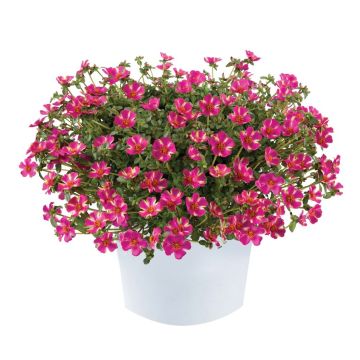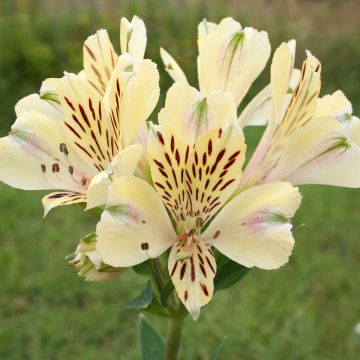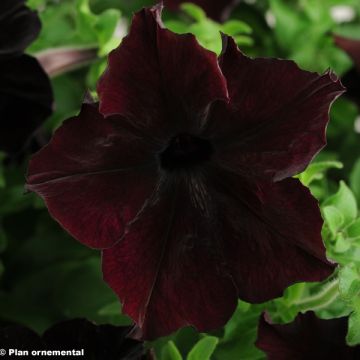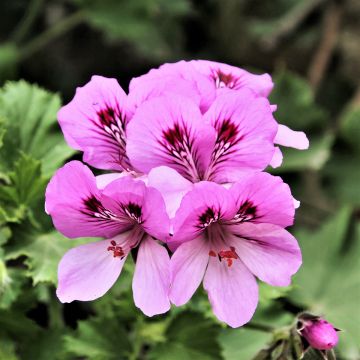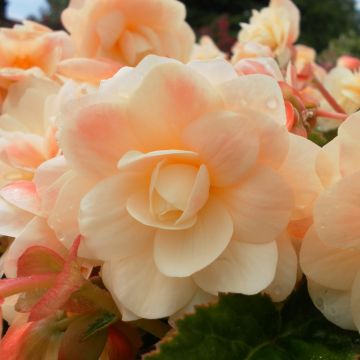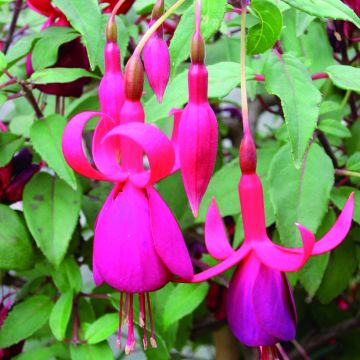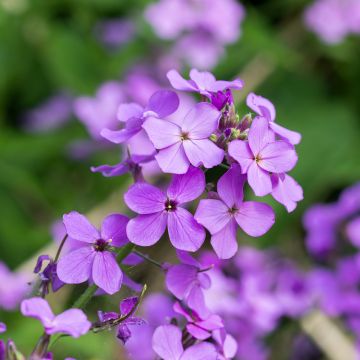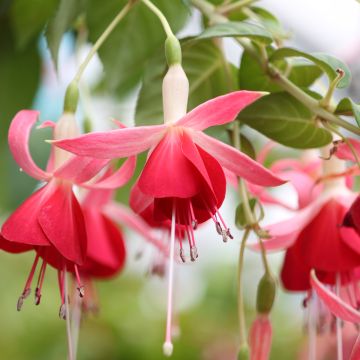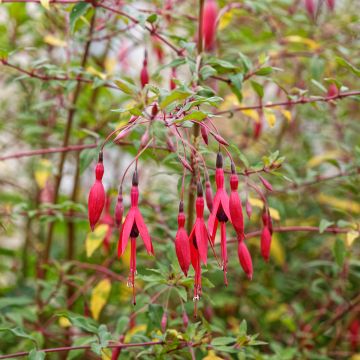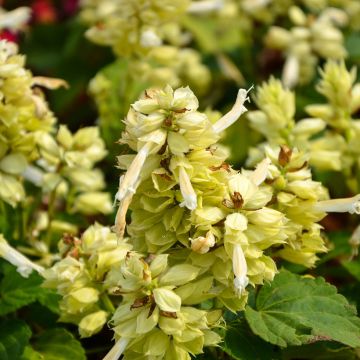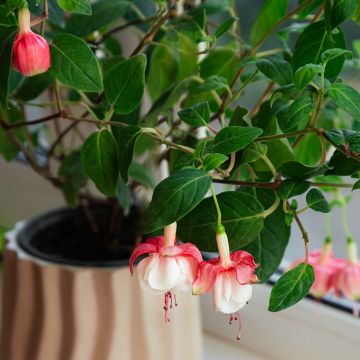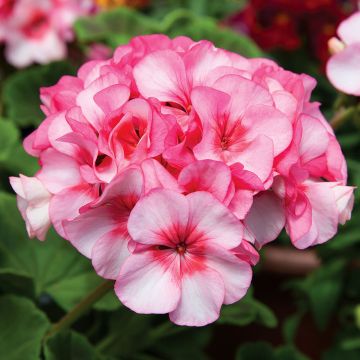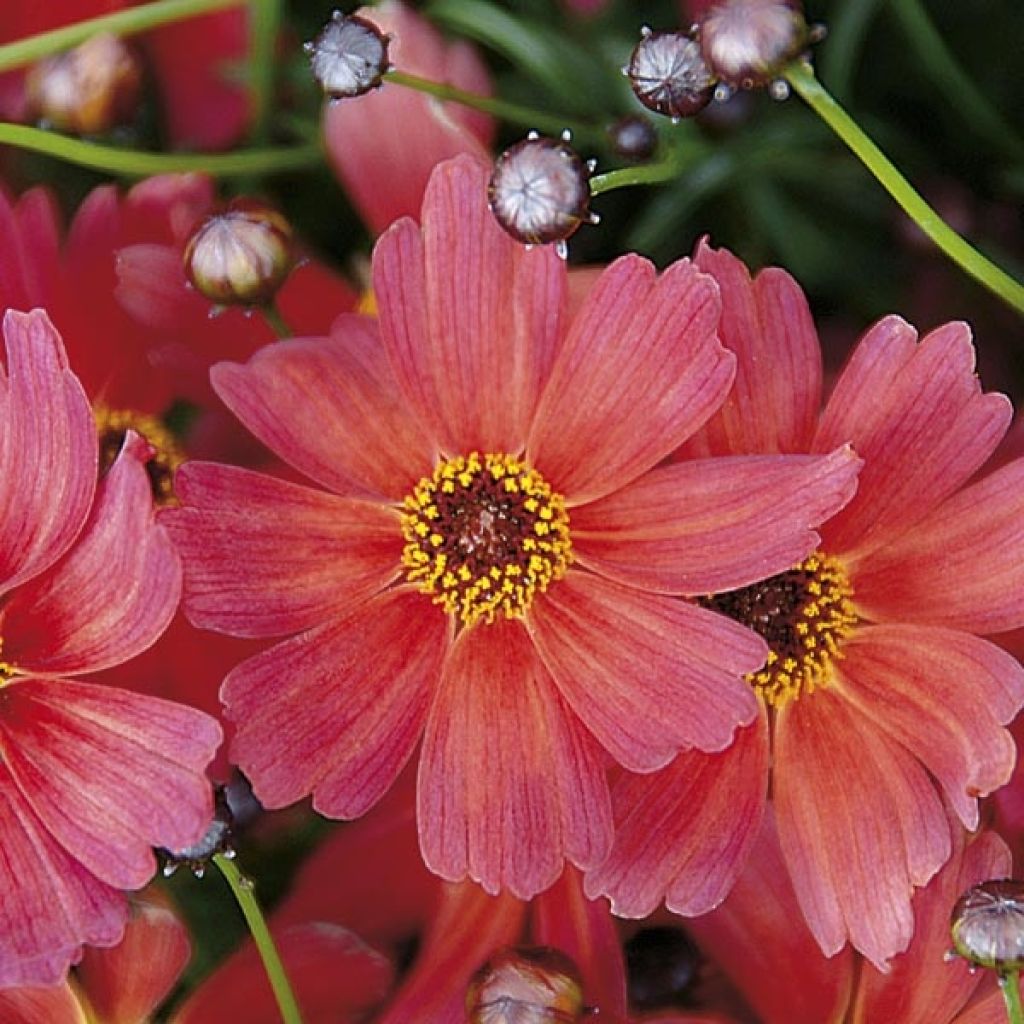

Coreopsis Rum Punch
Coreopsis Sunstar Orange
Coreopsis Sunstar Orange
Tickseed
Very sturdy, transplanted and then spiked 8 days later. No watering for a week and already a flower!
Edith, 31/05/2022
This item cannot be shipped to the selected country
Delivery charge from €5.90
More information
Schedule delivery date,
and select date in basket
This plant carries a 6 months recovery warranty
More information
We guarantee the quality of our plants for a full growing cycle, and will replace at our expense any plant that fails to recover under normal climatic and planting conditions.
From €5.90 for pickup delivery and €6.90 for home delivery
Express home delivery from €8.90.
Does this plant fit my garden?
Set up your Plantfit profile →
Description
The Coreopsis Sunstar Orange is a wonderful short-lived perennial, often grown as an annual. From early spring until the first frost, it dazzles with its incredible profusion of star-shaped flowers, dark red with a yellow edge. Compact and fast-growing, this variety will be an excellent choice for your front borders as well as in containers. Once established, it tolerates drought fairly well.
The Coreopsis Sunstar Orange, also known as "eye of a young girl" because of its central disc, belongs to the family Asteraceae (formerly called Composites). Coreopsis are native to North America, where they thrive in meadows and bright clearings. They are plants appreciated by gardeners for their very long flowering period, but also by pollinators as they are highly attractive to bees. For many years, horticulturists have hybridised several species together to multiply the colour variations. Among them, you can find Coreopsis rosea, C. verticillata and C. lanceolata. Most of the hybrids obtained are fast-growing plants that can disappear under the flowers within the first few weeks after planting, but they have a short lifespan. The star-shaped "flowers," typical of the Composite family, are actually inflorescences composed of dozens of flowers: the central ones, in tube form, are fertile; the outer ones, called ligulate, are sterile and serve as a lure for pollinators.
The Sunstar Orange variety is a beautiful compact plant that forms a round, well-homogeneous clump, reaching about 30 cm (11.8 in) in height and width. The flowers, produced abundantly between April (or even March) and October, have a deep red, garnet centre, enhanced by a margin of beautiful golden yellow. As they fade, the yellow becomes paler, creating lovely colour variations on the clump. The foliage is narrow and of a fairly shiny medium green colour.
Like many hybrid Coreopsis, Sunstar Orange is not a long-lasting plant: in mild climates, for example on the coast, it can sometimes live for 2 to 5 years. However, in most other regions, it will struggle to survive the winter, particularly due to its sensitivity to moisture. Therefore, in such cases, it should be considered as an annual. When planting it in borders or containers, use a light, fairly rich and well-drained soil. Once established, this Coreopsis can tolerate periods of drought. It is advisable to remove faded flowers as they appear to encourage continuous flowering. You can also cut back the clump after the first wave of flowers, and it will quickly start flowering again in the following weeks!
It will form beautiful combinations with Carex buchananii, Knapp's Carnation, or 'Beaujolais' Heuchera.
Note: Please be aware that our young plants in mini-pots are professional products intended for experienced gardeners: upon receipt, transplant and store them under cover (veranda, greenhouse, cold frame... ) at a temperature above 14 °C (57.2 in) for a few weeks before placing them outdoors once all risk of frost has definitively passed.
Report an error about the product description
Flowering
Foliage
Plant habit
Botanical data
Coreopsis
Sunstar Orange
Asteraceae
Tickseed
Cultivar or hybrid
Other Annuals A to Z
Planting and care
Plant this Coreopsis in a sunny position in rich and well-drained soil. Remove faded flowers as they appear, in order to prolong the flowering.
Planting period
Intended location
Care
-
, onOrder confirmed
Reply from on Promesse de fleurs
Plug plants - Annuals
Haven't found what you were looking for?
Hardiness is the lowest winter temperature a plant can endure without suffering serious damage or even dying. However, hardiness is affected by location (a sheltered area, such as a patio), protection (winter cover) and soil type (hardiness is improved by well-drained soil).

Photo Sharing Terms & Conditions
In order to encourage gardeners to interact and share their experiences, Promesse de fleurs offers various media enabling content to be uploaded onto its Site - in particular via the ‘Photo sharing’ module.
The User agrees to refrain from:
- Posting any content that is illegal, prejudicial, insulting, racist, inciteful to hatred, revisionist, contrary to public decency, that infringes on privacy or on the privacy rights of third parties, in particular the publicity rights of persons and goods, intellectual property rights, or the right to privacy.
- Submitting content on behalf of a third party;
- Impersonate the identity of a third party and/or publish any personal information about a third party;
In general, the User undertakes to refrain from any unethical behaviour.
All Content (in particular text, comments, files, images, photos, videos, creative works, etc.), which may be subject to property or intellectual property rights, image or other private rights, shall remain the property of the User, subject to the limited rights granted by the terms of the licence granted by Promesse de fleurs as stated below. Users are at liberty to publish or not to publish such Content on the Site, notably via the ‘Photo Sharing’ facility, and accept that this Content shall be made public and freely accessible, notably on the Internet.
Users further acknowledge, undertake to have ,and guarantee that they hold all necessary rights and permissions to publish such material on the Site, in particular with regard to the legislation in force pertaining to any privacy, property, intellectual property, image, or contractual rights, or rights of any other nature. By publishing such Content on the Site, Users acknowledge accepting full liability as publishers of the Content within the meaning of the law, and grant Promesse de fleurs, free of charge, an inclusive, worldwide licence for the said Content for the entire duration of its publication, including all reproduction, representation, up/downloading, displaying, performing, transmission, and storage rights.
Users also grant permission for their name to be linked to the Content and accept that this link may not always be made available.
By engaging in posting material, Users consent to their Content becoming automatically accessible on the Internet, in particular on other sites and/or blogs and/or web pages of the Promesse de fleurs site, including in particular social pages and the Promesse de fleurs catalogue.
Users may secure the removal of entrusted content free of charge by issuing a simple request via our contact form.
The flowering period indicated on our website applies to countries and regions located in USDA zone 8 (France, the United Kingdom, Ireland, the Netherlands, etc.)
It will vary according to where you live:
- In zones 9 to 10 (Italy, Spain, Greece, etc.), flowering will occur about 2 to 4 weeks earlier.
- In zones 6 to 7 (Germany, Poland, Slovenia, and lower mountainous regions), flowering will be delayed by 2 to 3 weeks.
- In zone 5 (Central Europe, Scandinavia), blooming will be delayed by 3 to 5 weeks.
In temperate climates, pruning of spring-flowering shrubs (forsythia, spireas, etc.) should be done just after flowering.
Pruning of summer-flowering shrubs (Indian Lilac, Perovskia, etc.) can be done in winter or spring.
In cold regions as well as with frost-sensitive plants, avoid pruning too early when severe frosts may still occur.
The planting period indicated on our website applies to countries and regions located in USDA zone 8 (France, United Kingdom, Ireland, Netherlands).
It will vary according to where you live:
- In Mediterranean zones (Marseille, Madrid, Milan, etc.), autumn and winter are the best planting periods.
- In continental zones (Strasbourg, Munich, Vienna, etc.), delay planting by 2 to 3 weeks in spring and bring it forward by 2 to 4 weeks in autumn.
- In mountainous regions (the Alps, Pyrenees, Carpathians, etc.), it is best to plant in late spring (May-June) or late summer (August-September).
The harvesting period indicated on our website applies to countries and regions in USDA zone 8 (France, England, Ireland, the Netherlands).
In colder areas (Scandinavia, Poland, Austria...) fruit and vegetable harvests are likely to be delayed by 3-4 weeks.
In warmer areas (Italy, Spain, Greece, etc.), harvesting will probably take place earlier, depending on weather conditions.
The sowing periods indicated on our website apply to countries and regions within USDA Zone 8 (France, UK, Ireland, Netherlands).
In colder areas (Scandinavia, Poland, Austria...), delay any outdoor sowing by 3-4 weeks, or sow under glass.
In warmer climes (Italy, Spain, Greece, etc.), bring outdoor sowing forward by a few weeks.



































